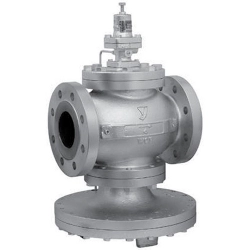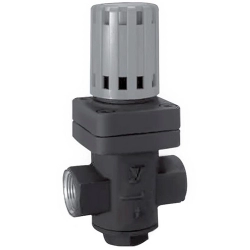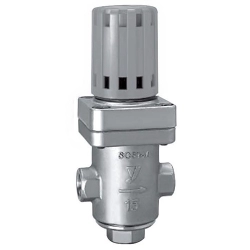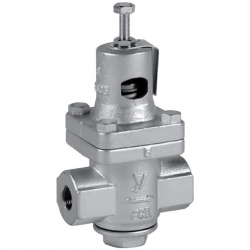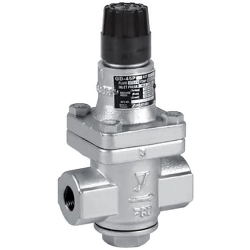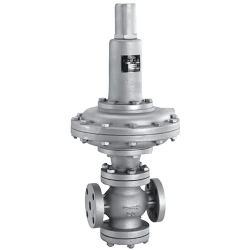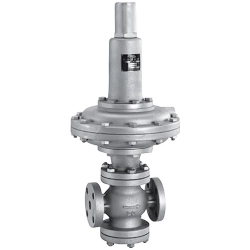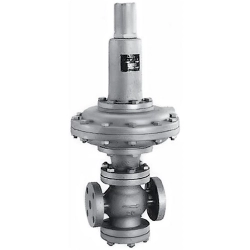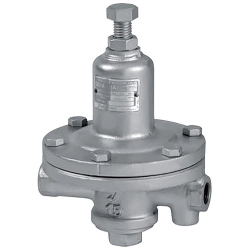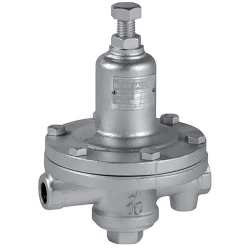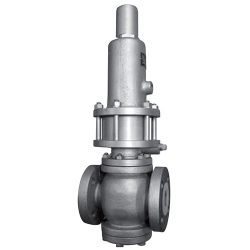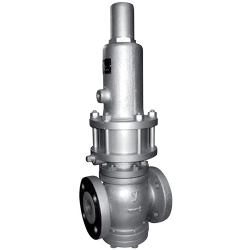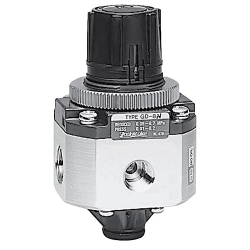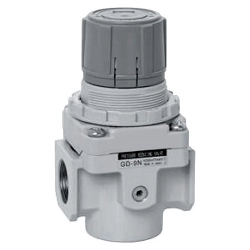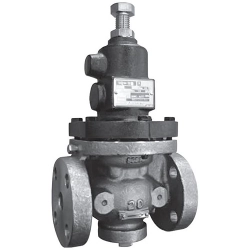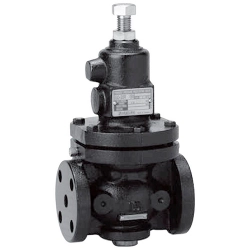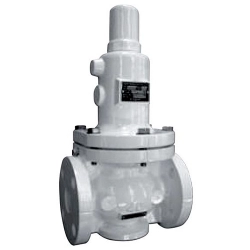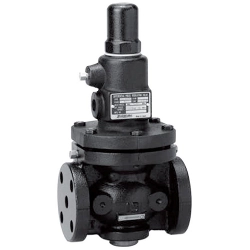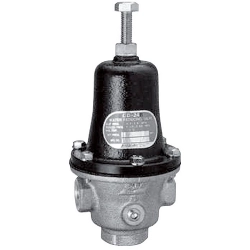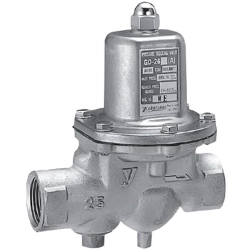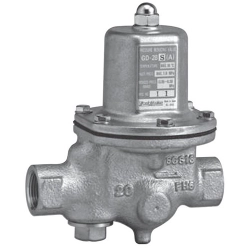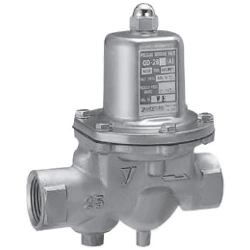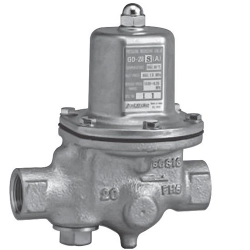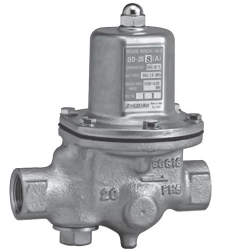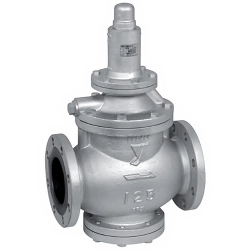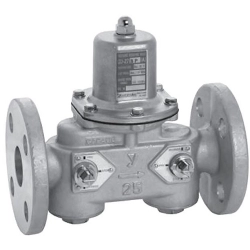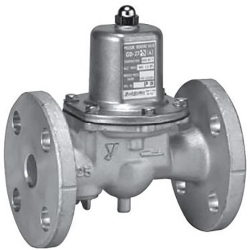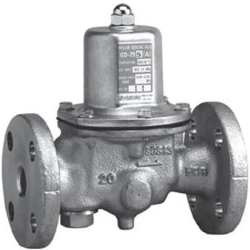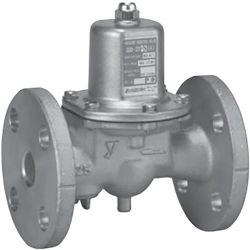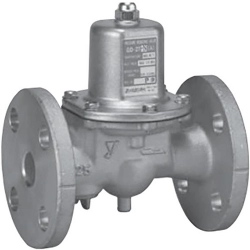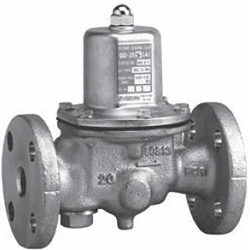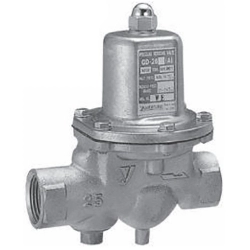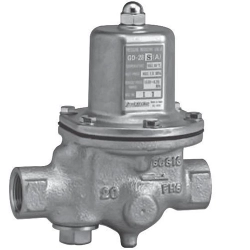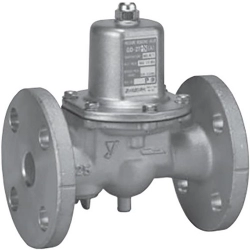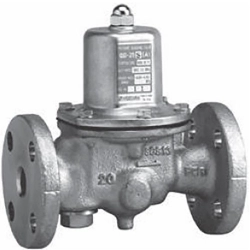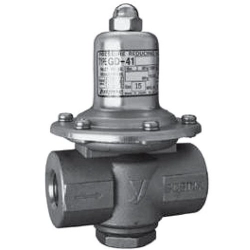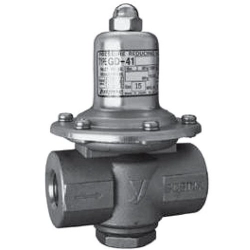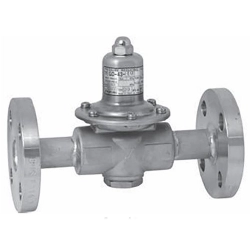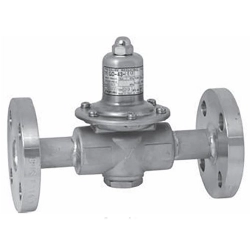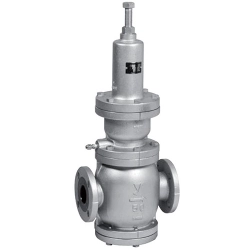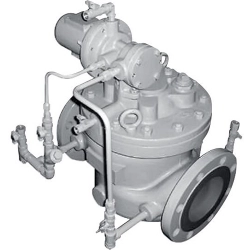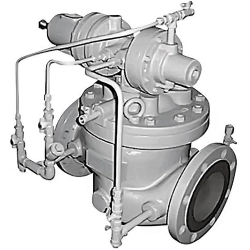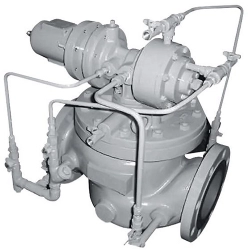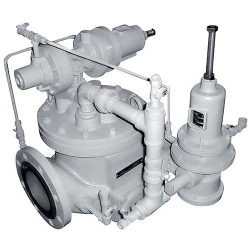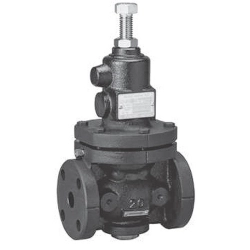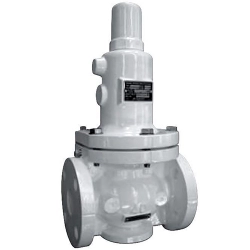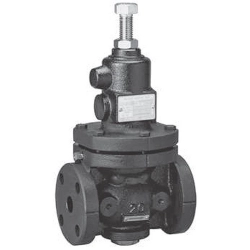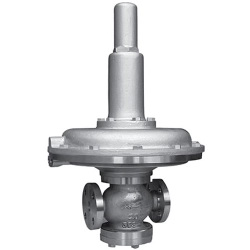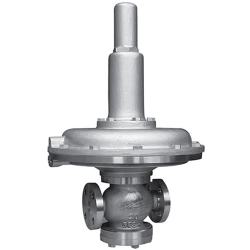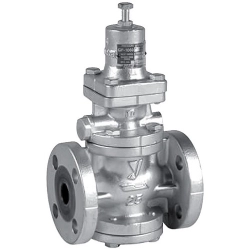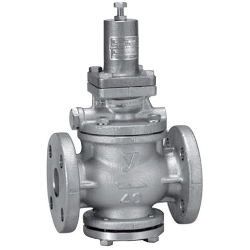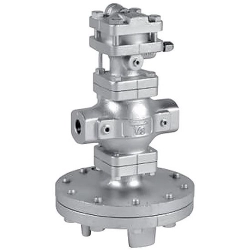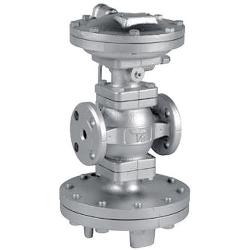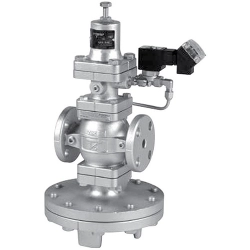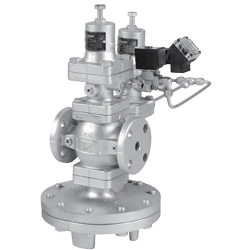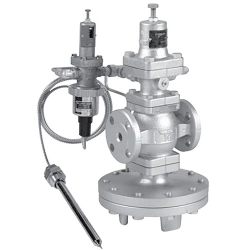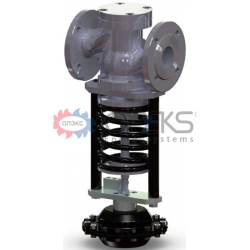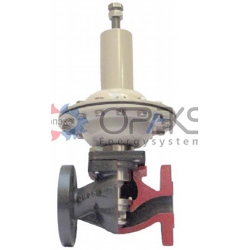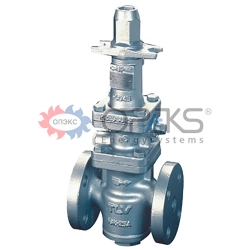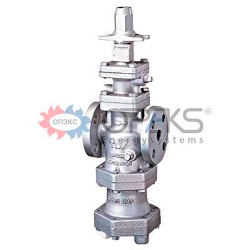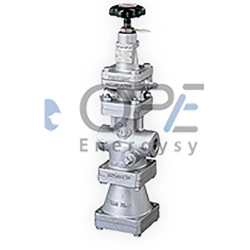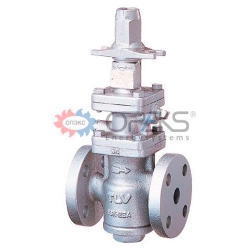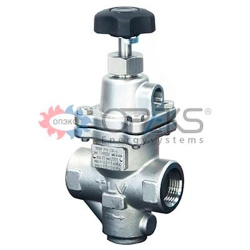Pressure reducing valves
 Reducing valve for steam Yoshitake GP-1000
Reducing valve for steam Yoshitake GP-1000
- Manufacturer: Yoshitake (Japan)
- Material: ductile iron, stainless steel, bronze/brass
- Action type: pilot operated
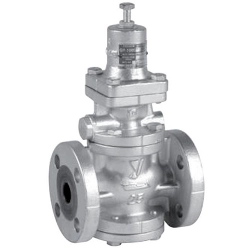 Reducing valve for steam Yoshitake GP-1000EN
Reducing valve for steam Yoshitake GP-1000EN
- Manufacturer: Yoshitake (Japan)
- Material: ductile iron, stainless steel, bronze/brass
- Action type: pilot operated
 Reducing valve for steam Yoshitake GP-1000HEN
Reducing valve for steam Yoshitake GP-1000HEN
- Manufacturer: Yoshitake (Japan)
- Material: stainless steel, ductile iron
- Action type: pilot operated
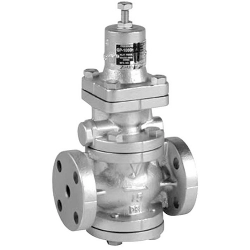 Reducing valve for steam Yoshitake GP-1000H
Reducing valve for steam Yoshitake GP-1000H
- Manufacturer: Yoshitake (Japan)
- Material: stainless steel, ductile iron
- Action type: pilot operated
 Reducing valve for steam Yoshitake GP-1000SS
Reducing valve for steam Yoshitake GP-1000SS
- Manufacturer: Yoshitake (Japan)
- Material: stainless steel, cast stainless steel
- Action type: pilot operated
 Reducing valve for steam Yoshitake GP-1000AS
Reducing valve for steam Yoshitake GP-1000AS
- Manufacturer: Yoshitake (Japan)
- Material: stainless steel, cast stainless steel
- Action type: pilot operated
 Reducing valve for steam Yoshitake GP-2000
Reducing valve for steam Yoshitake GP-2000
- Manufacturer: Yoshitake (Japan)
- Material: ductile iron, stainless steel
- Action type: pilot operated
 Reducing valve for steam Yoshitake GP-2000EN
Reducing valve for steam Yoshitake GP-2000EN
- Manufacturer: Yoshitake (Japan)
- Material: ductile iron, stainless steel
- Action type: pilot operated
Shown 8 from 86
show all
 Individual heating station of the heating system according to an independent connection scheme
Individual heating station of the heating system according to an independent connection scheme
 Reducing valve for steam Yoshitake GP-1000EN
Reducing valve for steam Yoshitake GP-1000EN
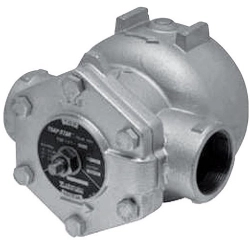 Float steam trap Yoshitake TSF-10
Float steam trap Yoshitake TSF-10
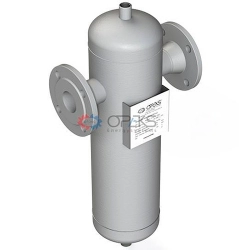 Centrifugal steam separator OPEKS-1-SC16-1-F50
Centrifugal steam separator OPEKS-1-SC16-1-F50
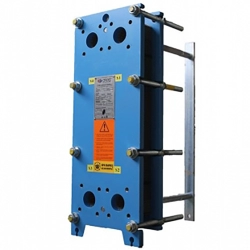 Plate heat exchanger THERMAKS РТА (GC)-16
Plate heat exchanger THERMAKS РТА (GC)-16
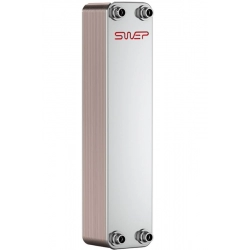 Brazed heat exchanger SWEP B25T
Brazed heat exchanger SWEP B25T
 Brazed heat exchanger SWEP B25THx20
Brazed heat exchanger SWEP B25THx20
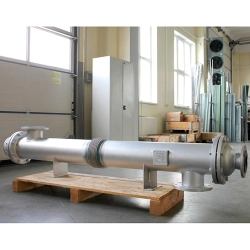 Shell and tube coolers
Shell and tube coolers
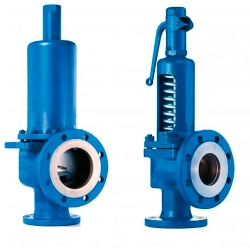 Safety valve LESER 441/442
Safety valve LESER 441/442
What is a pressure reducing valve
In many hydraulic and steam-gas, incl. pneumatic systems (transport, distribution, heat exchange, steam-gas and hydraulic drives), to ensure their regular and trouble-free operation, constant maintenance of the operating pressure at a certain level (its stabilization) is required. At the same time, injection units (pumps, pumps, compressors, turbines, boilers) often have a large margin of power and performance in relation to the throughput of such a system, and do not allow themselves to provide constant (stable) pressure of the working environment in it. Also, the stability of maintaining the operating pressure in a hydraulic or pneumatic system is affected by changes in the operating modes of consumers (servo drives, actuators, collapsible valves), and possible abnormal or emergency situations in their operation.
In the overwhelming majority of cases of construction of hydro- and steam-gas systems, it is not possible to implement manual control of the working pressure in them. Such a task can only be done by automation. Reducing valves (pressure regulators) are exactly designed to solve such problems.
A pressure reducing hydraulic or steam-gas (pneumatic) valve is an automatic regulating device, the tasks of which are:
- lowering the medium supplied from the compressor in the system to the level required for its consumers. The pressure at the inlet to the pressure reducing valve is called supplied (injected), at the outlet from it - reduced (working, nominal).
- automatic maintenance (stabilization) of the working pressure in the system.
Design and principle of operation of the pressure reducing valve
The principle of operation of almost any pressure reducing valve is based on a change in the flow area of the pipeline (pressure of the medium, hydraulic resistance) by the control throttle (or spool, gate), from its full opening (when the reduced pressure is lower than the required one in the system) to complete closing (when the injected pressure exceeds the threshold valve settings). Differences between pressure reducing valves of various designs are only in the implementation of the control throttle drive automation mechanism.
Among the main, most common schematic diagrams for constructing pressure regulators, the following are distinguished:
Direct acting pressure reducing valve. In this design, the inlet pressure generated at the valve inlet pushes the balancing piston of the throttle, trying to close it, it is counteracted by the force of the driver spring, which tries to open the throttle fully. Under the influence of these oppositely directed alternating forces, the current value of the flow area of the throttle slot is automatically set, and, accordingly, the set value of the reduced pressure is automatically maintained. The required value of the reduced pressure is set by the mechanism (screw) for adjusting the elasticity of the reference spring.
At low values of the flow rate of the working medium, the direct-acting valve shows quite acceptable results in terms of the accuracy and stability of pressure regulation in the system. But at large values of the flow rate of the working medium, such a valve regulates the pressure with large errors. The reason for these errors is the large flow turbulence around the throttling head, and the pressure surges in the valve caused by this turbulence.
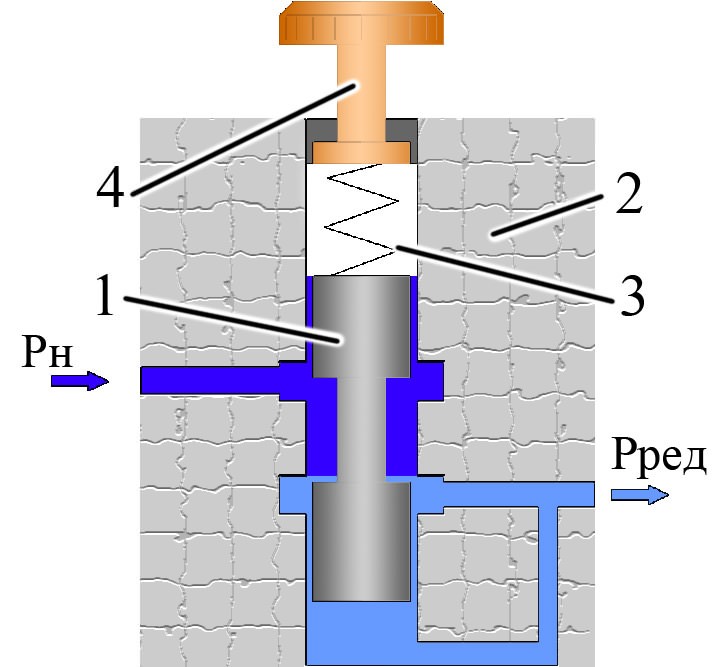
Scheme:
Рн - head pressure;
Rred - reduced pressure;
1 - spool;
2 - case;
3 - reference spring;
4 - adjusting screw
Indirect acting pressure reducing valve. A discharge line with a constant throttle and an additional bypass valve is introduced into the indirect valve circuit, which, as a rule, is a spring-loaded ball. If the reduced pressure after the main spool begins to exceed a certain value (the flow rate of the medium increases and the main spool gives errors), the spring-loaded ball will slightly open the drain channel, and part of the liquid through the discharge line through a constant choke will go to drain, thereby reducing the increased flow of the medium, and, accordingly, reducing the reduced pressure. Thus, the indirect valve reduces the negative impact of a large flow rate of the medium, increases the accuracy of regulation and stabilization of the reduced pressure in the system. But errors can also creep into the operation of the indirect valve if the capacity of the constant throttle of the outlet line cannot cope with the increased flow head.
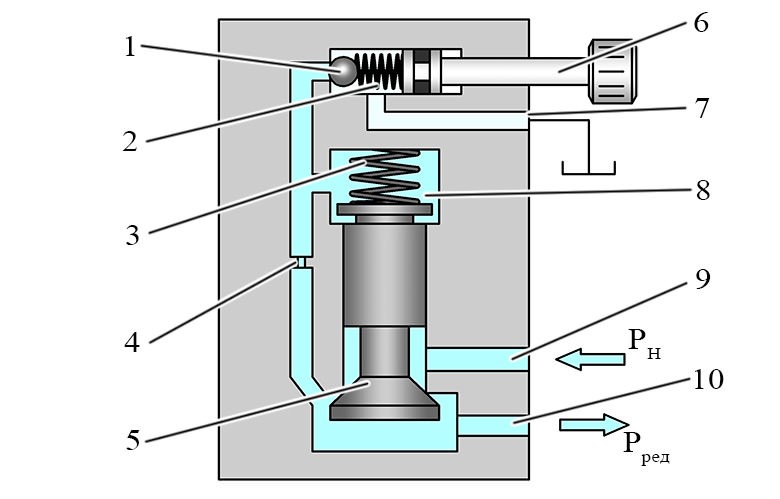
Scheme:
1 - bypass valve ball;
2 - spring of the bypass valve;
3 - reference spring;
4 - constant choke;
5 - throttle (spool);
6 - an adjusting screw;
7 - drain channel;
8 - camera;
9 - supply channel;
10 - outlet line.
Pilot operated pressure reducing valve . The principle of operation of a pilot operated pressure reducing valve is based on the fact that the valve throttle is moved partly by the pressure of the working medium itself, and partly by spring force, as in direct or indirect valves. An additional pilot valve (pilot) is introduced into the circuit of such a pressure reducing valve, which controls the selection of the reduced medium and its supply to the chamber above the spring-loaded piston (membrane in diaphragm-type valves) of the throttle or shutter.
If the reduced pressure begins to exceed the set value (the throttle spring cannot cope with the increased flow of the medium), the pilot valve opens, supplying part of the flow to the piston (diaphragm) chamber. The pressure of the medium on the piston (or on the diaphragm) will lower the throttle (plug) of the valve, reducing the throttle gap between its head (plug) and the seat. Thus, the flow of the medium, and, accordingly, the reduced pressure, will decrease.
A pilot operated pressure reducing valve is believed to provide the best pressure control accuracy and stability in a system. Also, this circuit allows you to regulate the pressure in the system remotely by controlling the opening or closing of the pilot valve using a pneumatic or electromechanical actuator.

Scheme:
1, 2, 3 - shut-off valves;
4 - control device;
5 - pilot valve;
9 - output channel for reduced flow
10 - supramembrane chamber;
11 - valve shutter;
12 - valve seat.
Applications
Few gas or hydraulic systems do without a pressure control system based on pressure reducing valves of various designs. It is much easier to organize them according to the work environment they are designed to work with:
- pressure reducing valves for working with water - used in a variety of water supply systems for intake, transportation, analysis (distribution) of water, irrigation systems, washing machines, water heating and cooling systems;
- steam valves - for steam driven systems, steam heating, steam cleaning, etc.;
- pressure reducing valves for working with oil - they are mainly used in technical units with a hydraulic drive;
- for refrigerants and freons - used in refrigeration units and climate control systems;
- for technical and special fluids - in the systems of transportation, storage and distribution of special fluids, providing technological and technical processes with their participation;
- pressure reducing valves for air - used in air cooling systems, ventilation, air conditioning, pneumatic drives;
- pressure reducing valves for industrial, technical, fuel gases - are used in the corresponding gas transportation, storage and application systems.
Benefits of Yoshitake Pressure Reducing Valves
For more than seventy years, the Japanese company Yoshitake has been specializing in the production of reliable and energy-saving equipment for hydraulic, pneumatic, water and gas channel (pipeline) systems of various compositions, purposes, operating modes. The guaranteed quality of Yoshitake products is confirmed by the high business reputation and authority that the company has won all over the world.
Yoshitake pressure reducing valves are characterized by:
- technical perfection, thoughtfulness and compact design;
- high accuracy and stability of maintaining the required operating parameters;
- energy efficiency of application;
- using only high-quality, durable and corrosion-resistant materials in the structure;
- overall technical reliability and durability.
If you are interested in long-term and trouble-free operation of your duct (piping) system, you should definitely complete it with Yoshitake piping control equipment.

